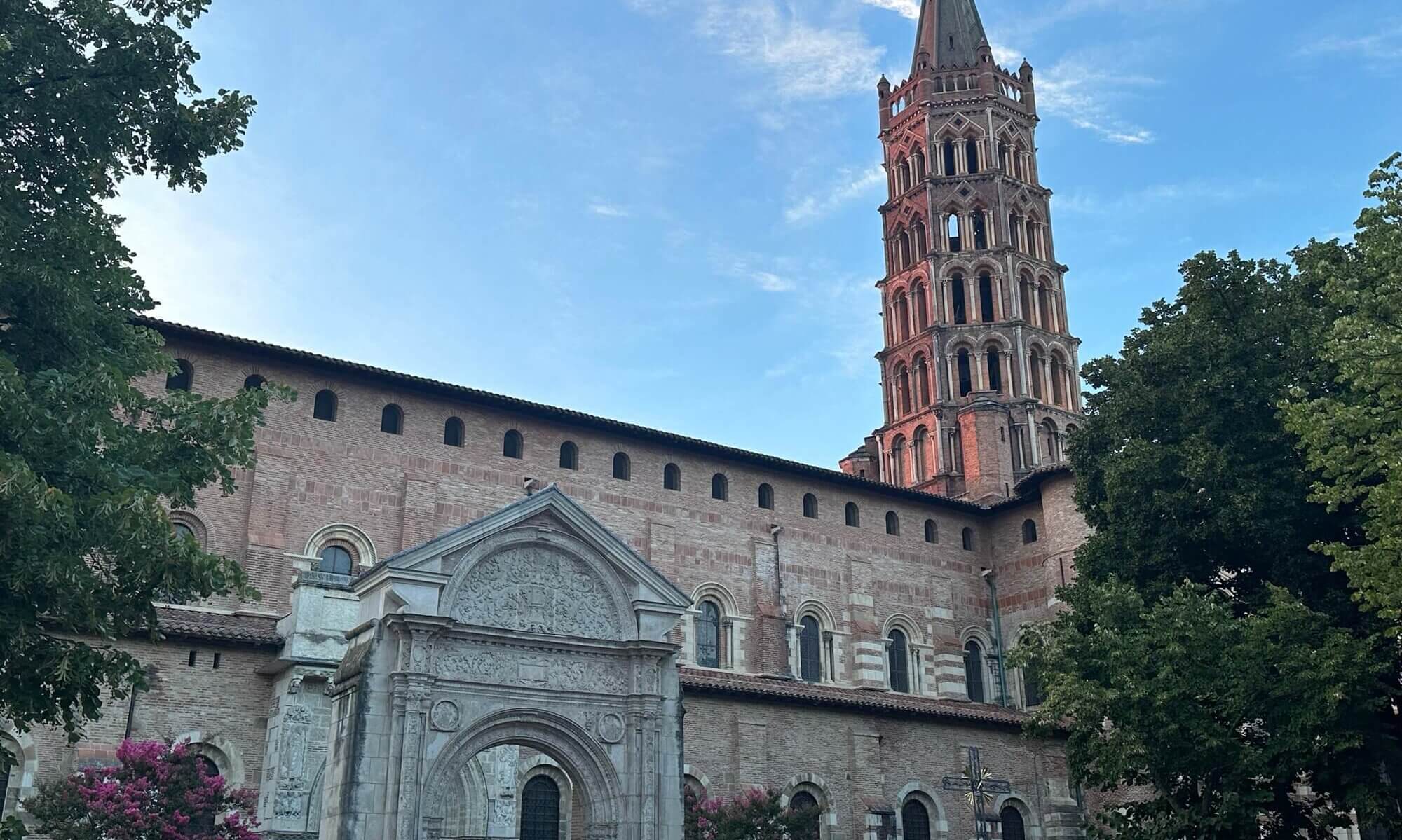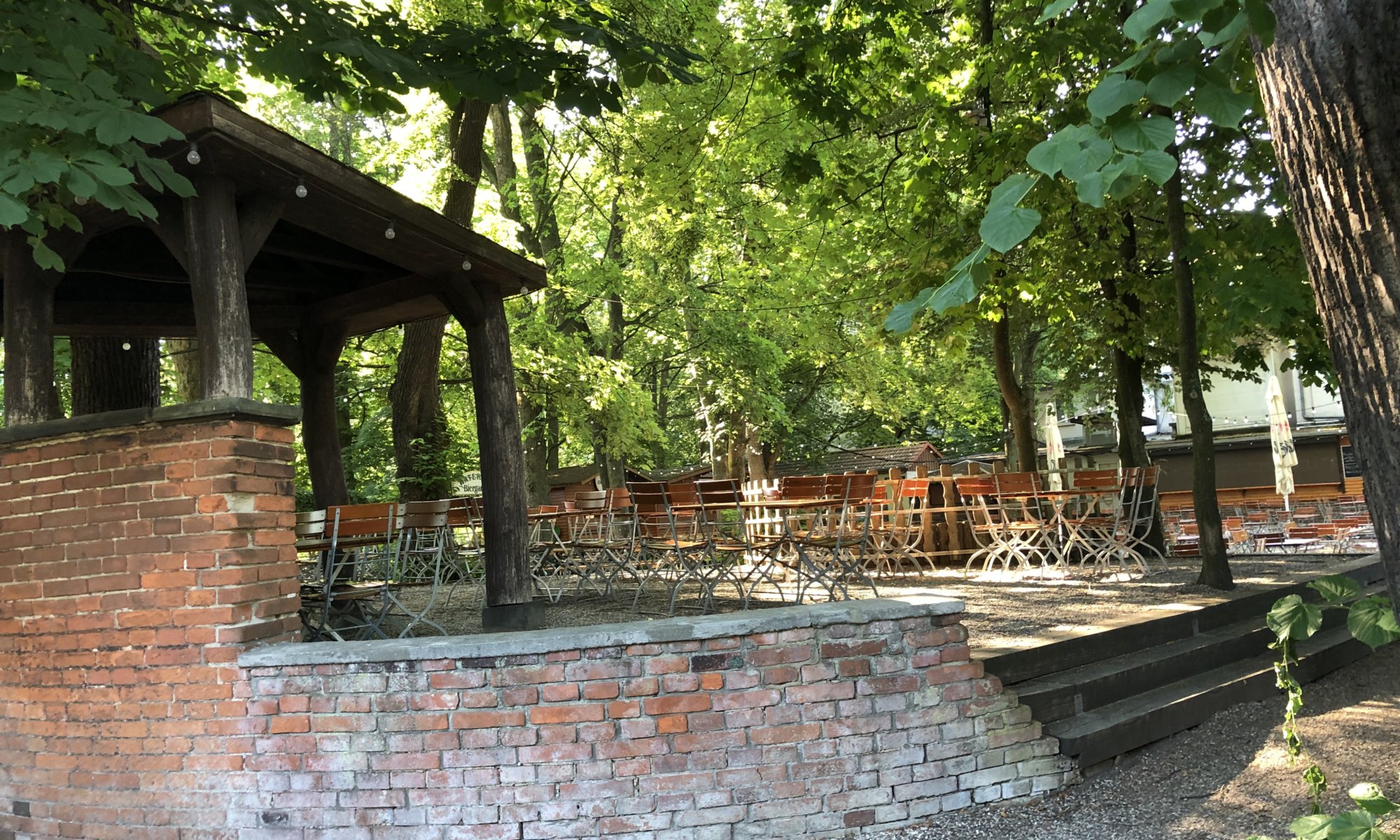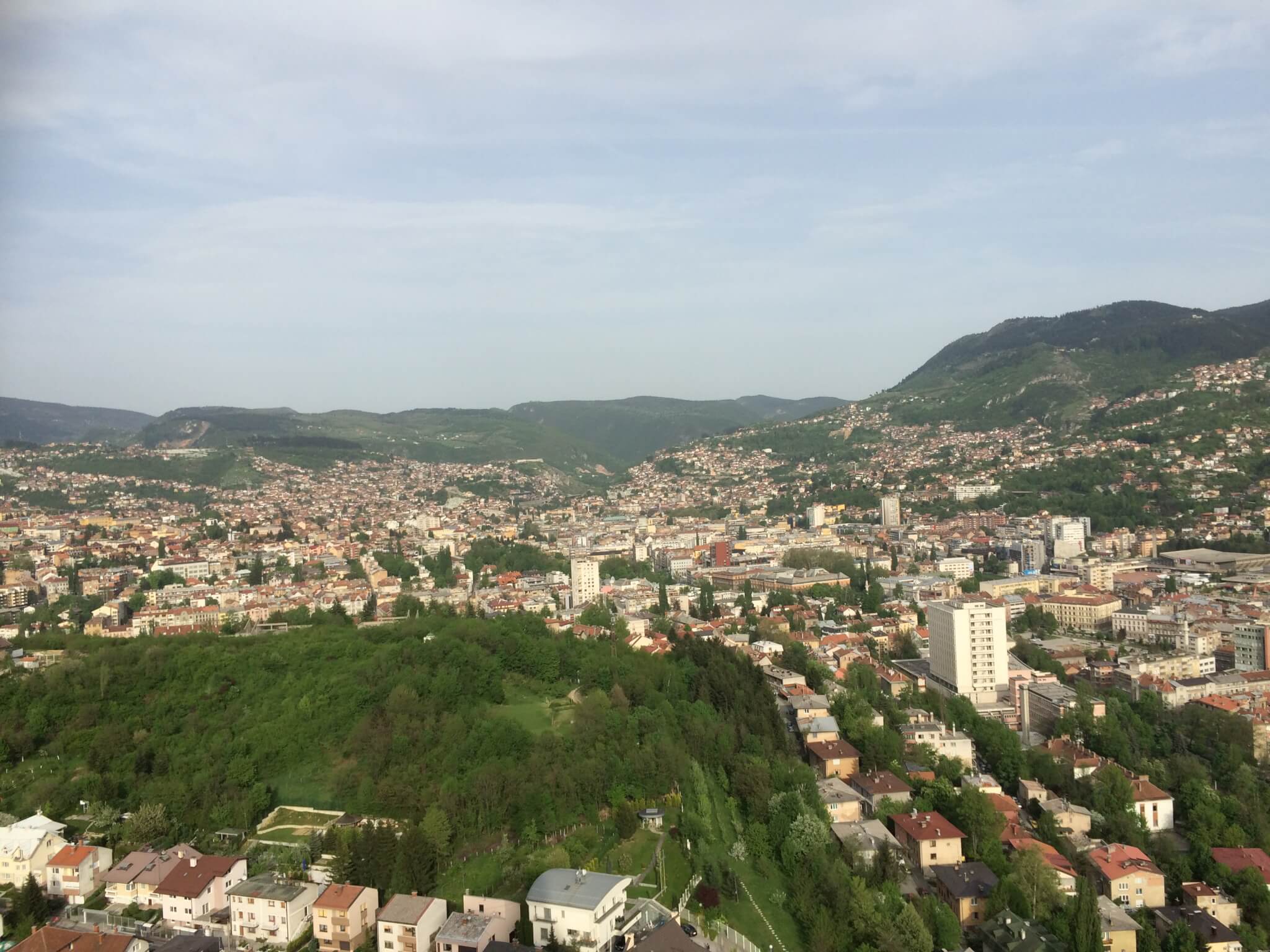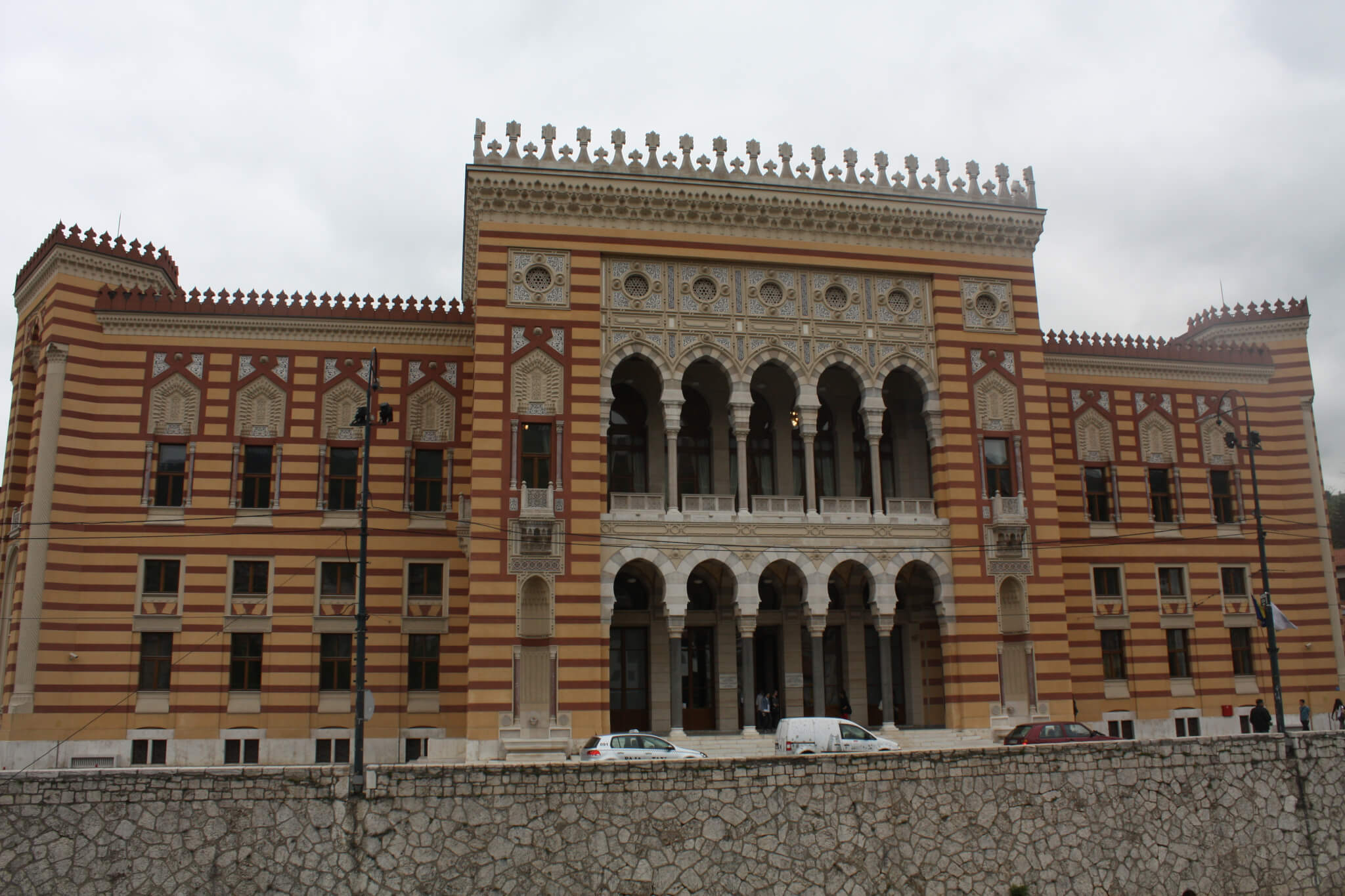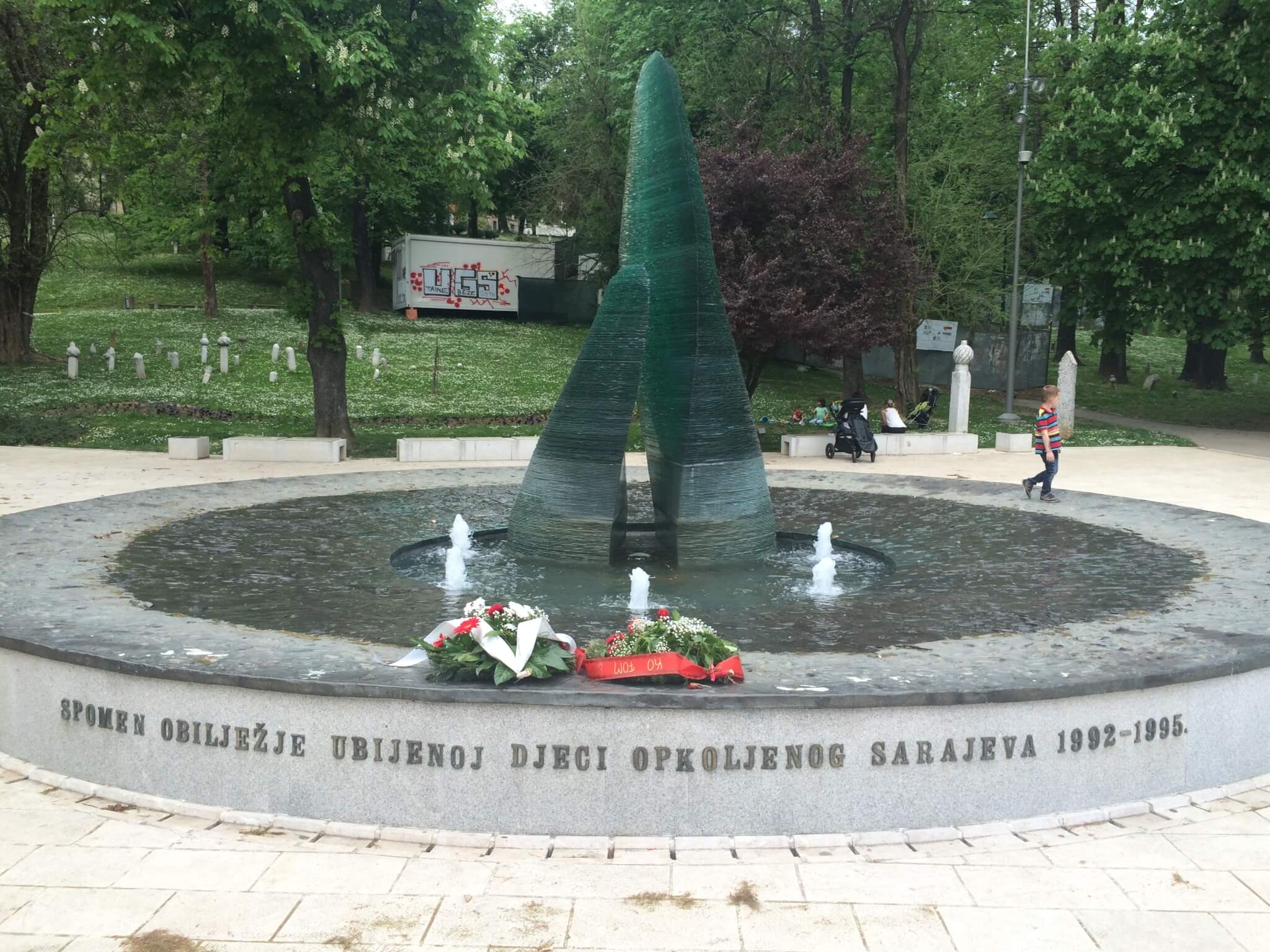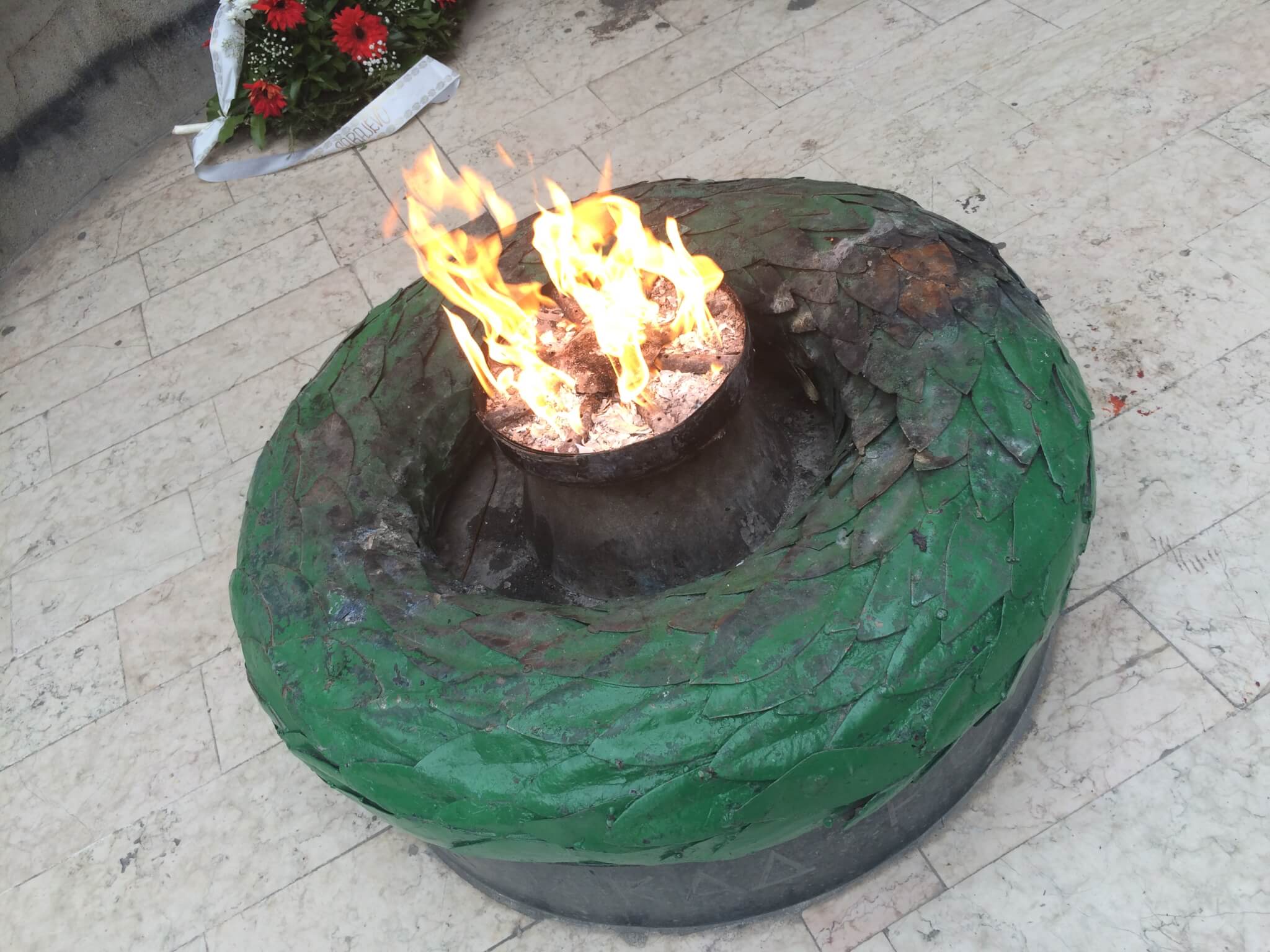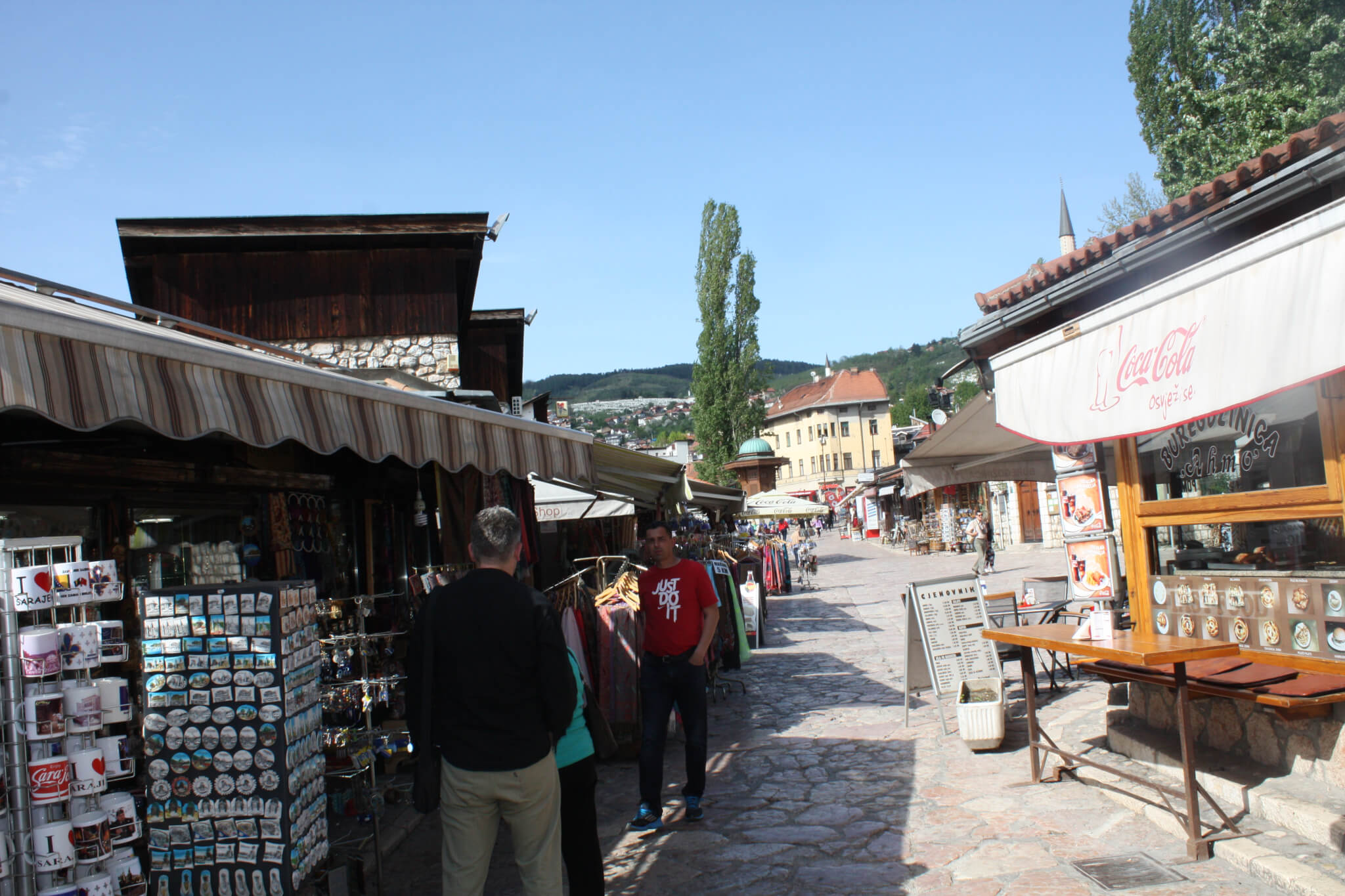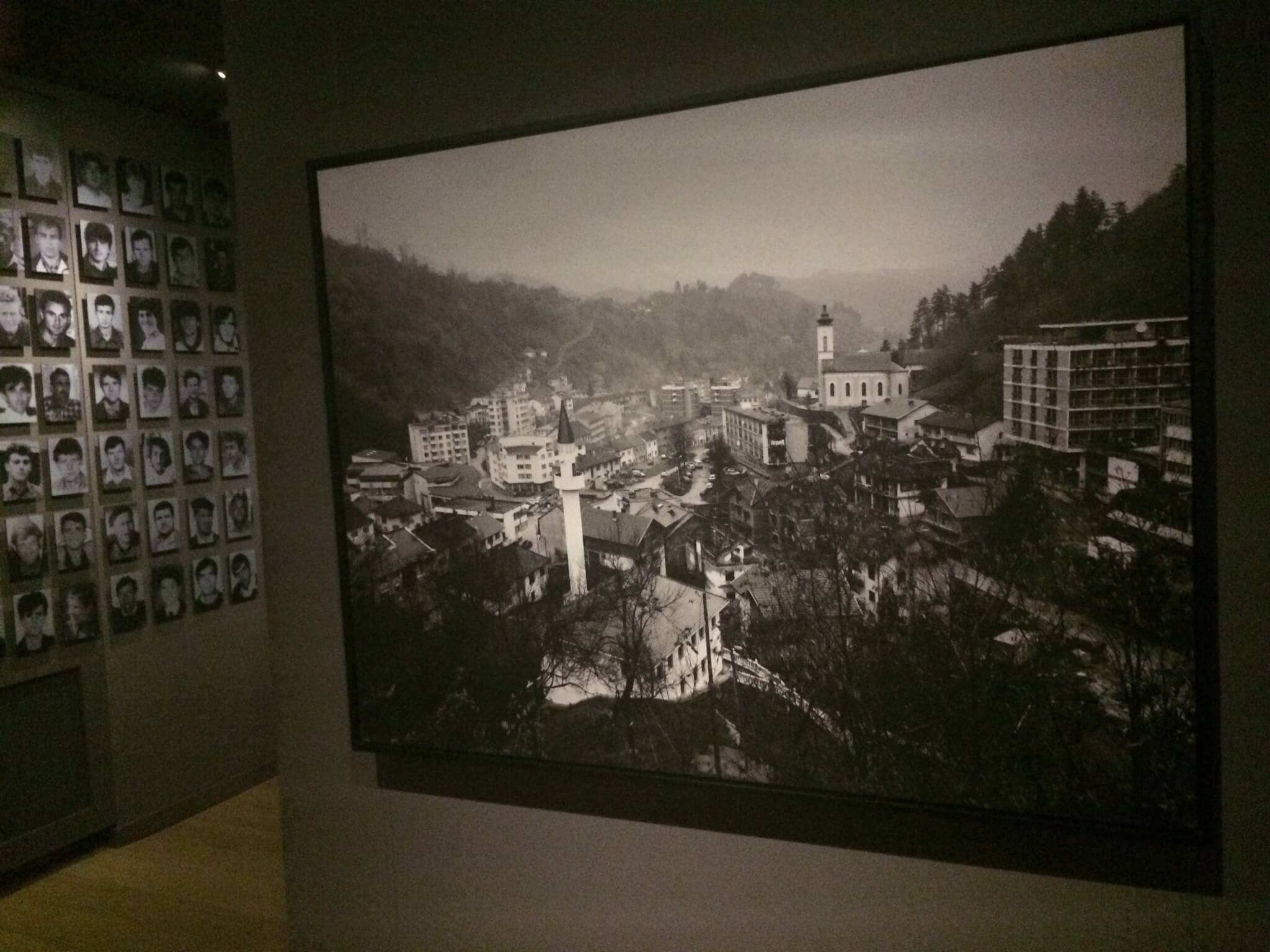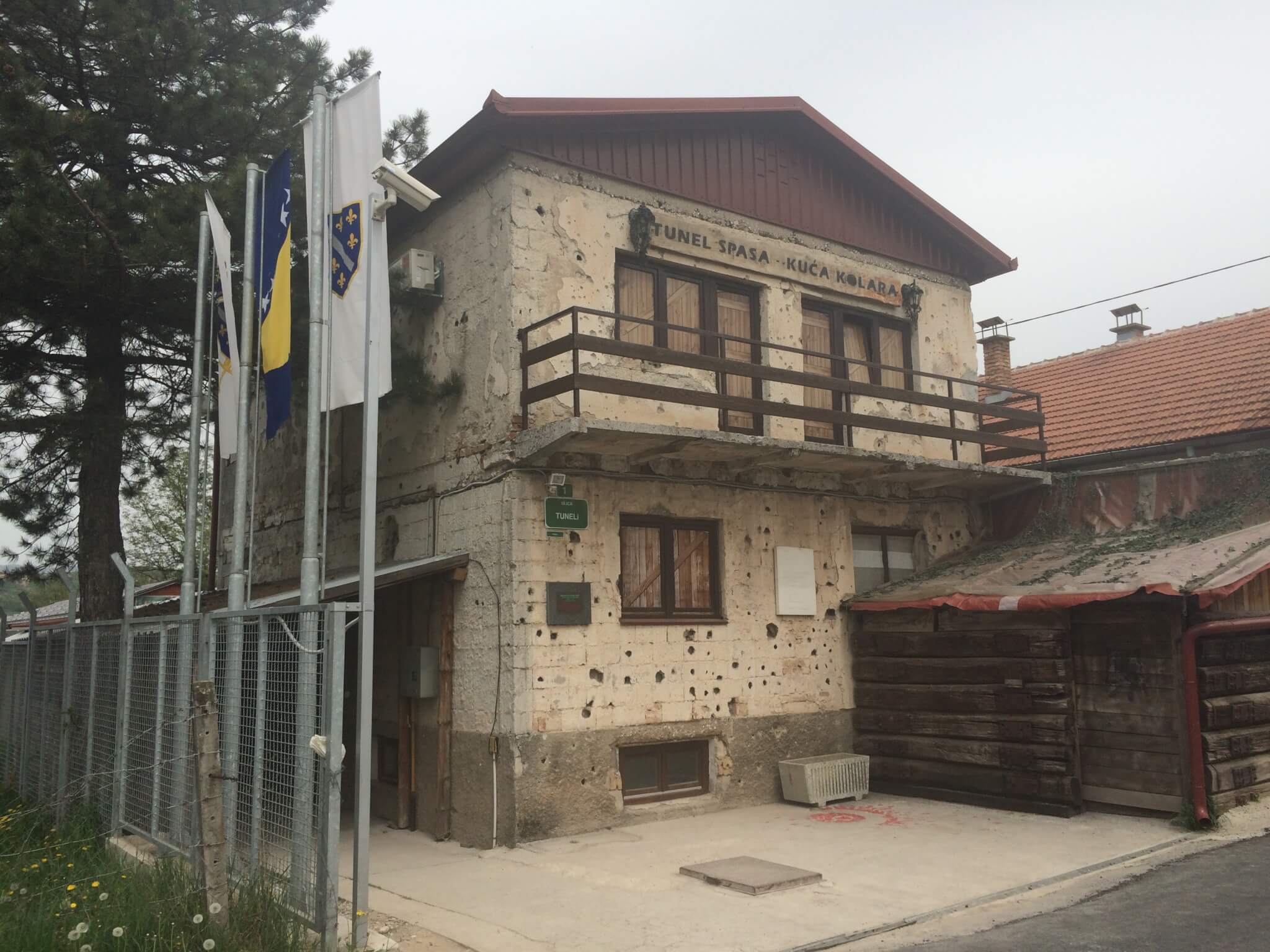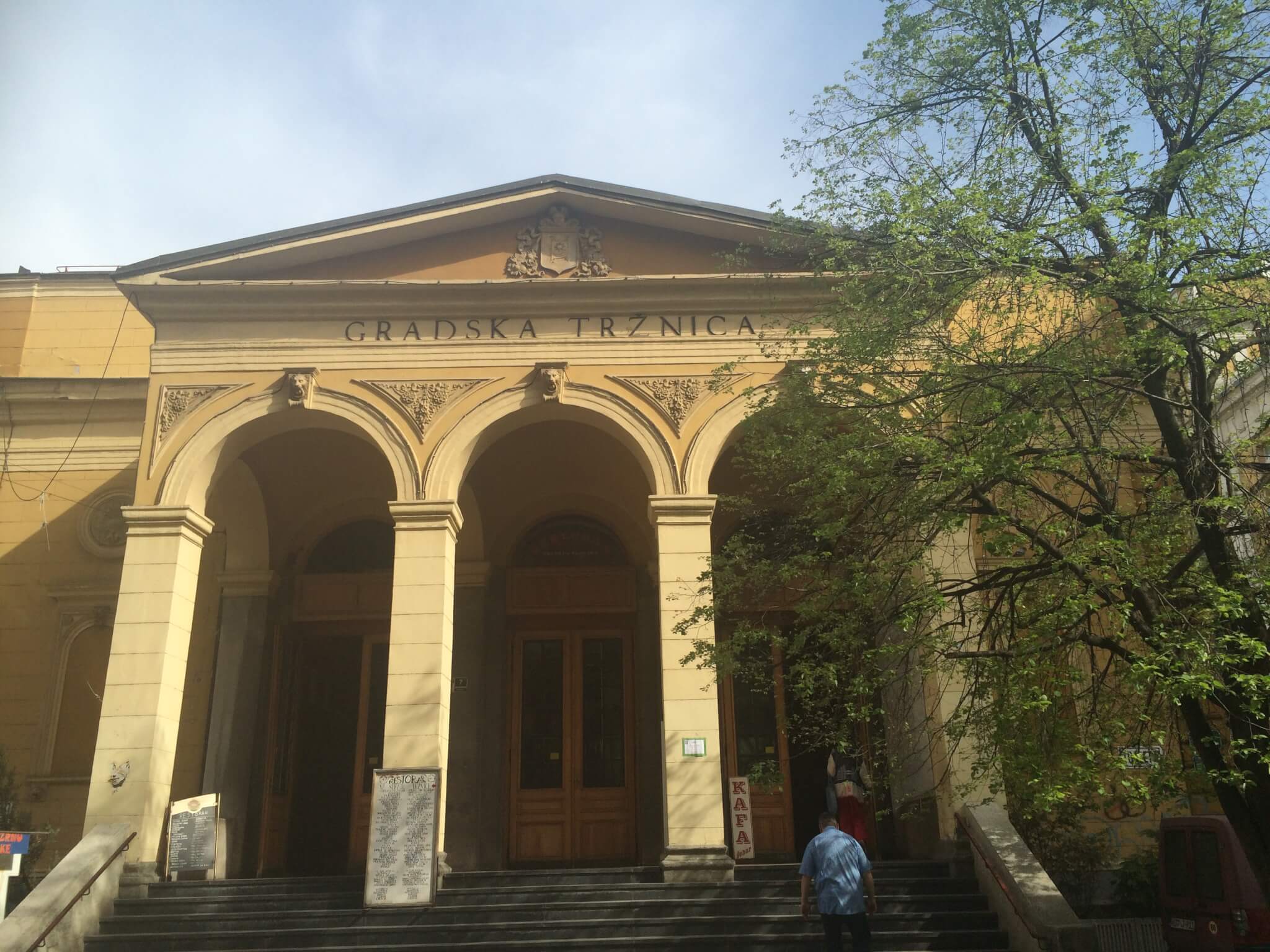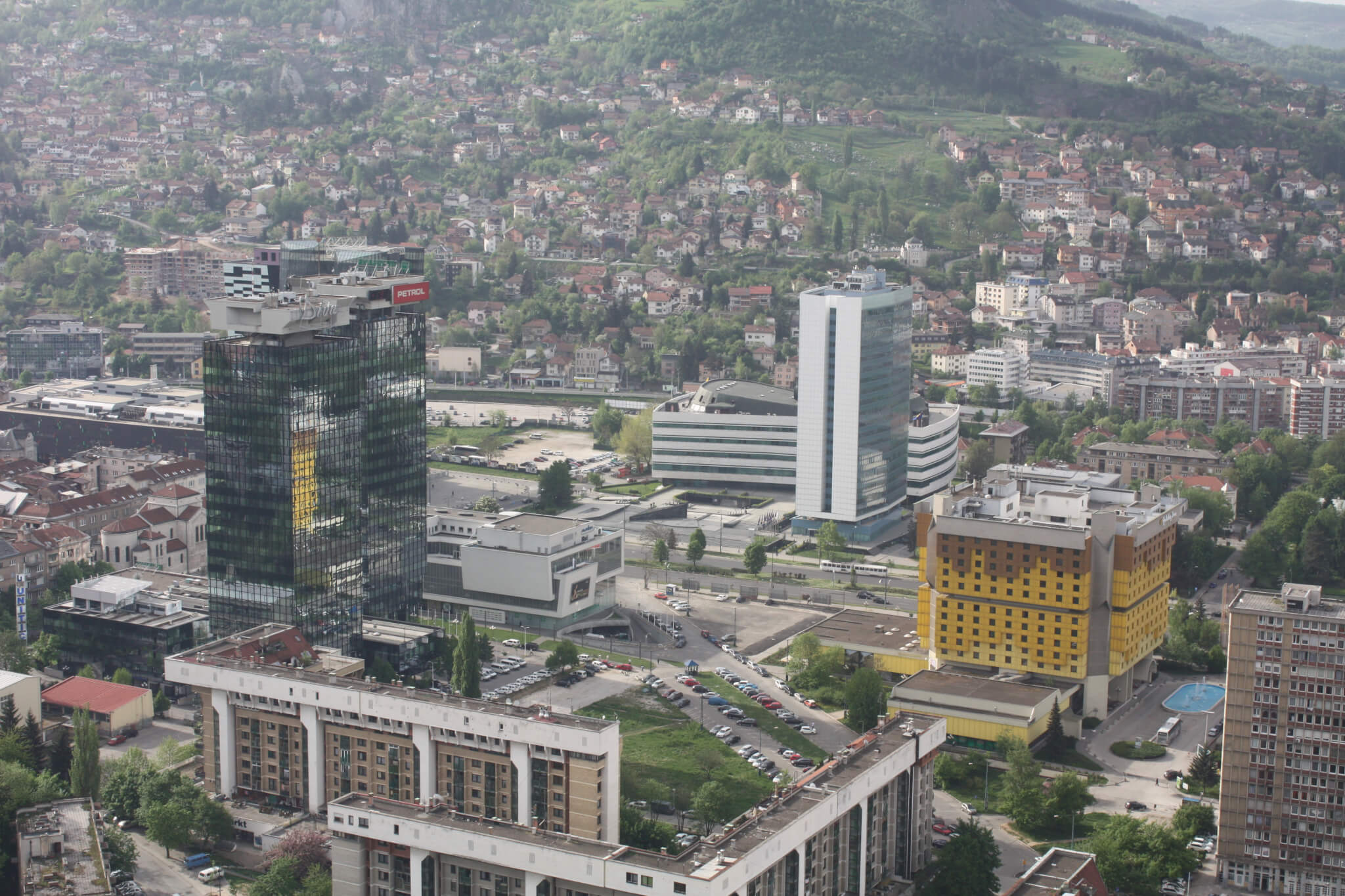The ‘Waterloo’ is a beergarden quite close to the city center of Hannover, Germany – next to the river Leine, the market hall and the parliament of Lower Saxony. There are three reasons why you might visit this place: (1) You are in need of fresh air and a good beer, (2) you want to watch soccer games of the Bundesliga on screen, or (3) you are on your way to the Niedersachsenstadion for watching live soccer and have a break. To get there you can take the tramway to the station also called Waterloo.
Continue reading “Waterloo-Biergarten”Avaz Twist Tower
Sarajevo is located in a nice valley between green mountains. To have a glimpse on the landscape you can get on top of the Avaz Twist Tower next to the railway station. It has been built from 2006 to 2009 and looks quite freaky with its twisted glass construction.
Continue reading “Avaz Twist Tower”The old city hall: A good starting point
When coming to Sarajevo, people typically visit the old osman quarter (Baščaršija) first. Fair enough, because it might be the most beautiful part of the town and fascinates with its oriental atmosphere. A good starting point for this visit is the old city hall, built in 1892. You’ll find it close to the Miljacka river where Obala Kulina bana and Brodac streets cross.
Continue reading “The old city hall: A good starting point”Memorial to the children of Sarajevo
During the siege of Sarajevo especially the children became victims. Not only because they have been betrayed of an unburdened childhood but also, because often children playing in the streets where hit by shells and bullets. As stying inside was no guarantee for surviving, they tried to live a normal live, went to school and played on this unusual playground. The city of Sarajevo has therefore created a memorial in the Veliki park, close to Maršala Tita.
Continue reading “Memorial to the children of Sarajevo”The eternal flame
At the west-end of the Ferhadija a gas fire is burning. It reminds of the liberation of Sarajevo by the troops of Yugoslavia in World War II. It was ignited in 1946 and burned continous until 1992. During the siege natural gas was a scarce good and the termination of the fire was seen as a bad signal.
Continue reading “The eternal flame”Baščaršija
The old Osman quarter is the oldest and maybe the most beautiful place in Sarajevo. Here you’ll find narrow houses with all kind of shops, good restaurants and even the chance to smoke a waterpipe (Nagileh). The location was created in the middle of the 15th century as a trading spot. During the Osman reign it fastly became the central location for crafts and trading of different goods.
Museums in Sarajevo
The museum landscape in Sarajevo is small. Some institutions like the national museum are shut down because of lack of funding and political reasons. Others like the national history museum have not been repaired and you can still see bullet holes on the deteriorating buildings. In others simple things like lightbulbs are missing. But there are still some places worth to see.
Continue reading “Museums in Sarajevo”Tunel spasa
The Tunel spasa is a museum about the tunnel of Sarajevo. It is located in Butmir close to Sarajevo International Airport. During the siege of Sarajevo from 1992 to 1995 there was no way into the city. In 1993 a 800 meter long tunnel was built under the airfield from Dobrinja within the besieged city to Butmir in the free bosnian territory.
Continue reading “Tunel spasa”Markale: The tragedy that ended the war
The historic market hall of Sarajevo is situated in the pedestrian zone, the Ferhadija, close to Trg oslobođenja. As it was built in Austro-Hungarian time its name was officially “Markthalle für Sarajevo” (market hall for Sarajevo) – but the citizens converted the name over time from “Markthalle” to “Markale“. Architect August Butsch created a building in Renaissance Revival architectural style which was opened in 1895.
Continue reading “Markale: The tragedy that ended the war”Buildings well known to the world
When entering the city of Sarajevo, shortly before the main street Ferhadija begins, you’ll find a scenery you might well know. On the left side the massive building of the hotel Holiday Inn, behind that the two UNIS towers; on the other side of the road the skyscraper of the Bosnian parliament.
Continue reading “Buildings well known to the world”